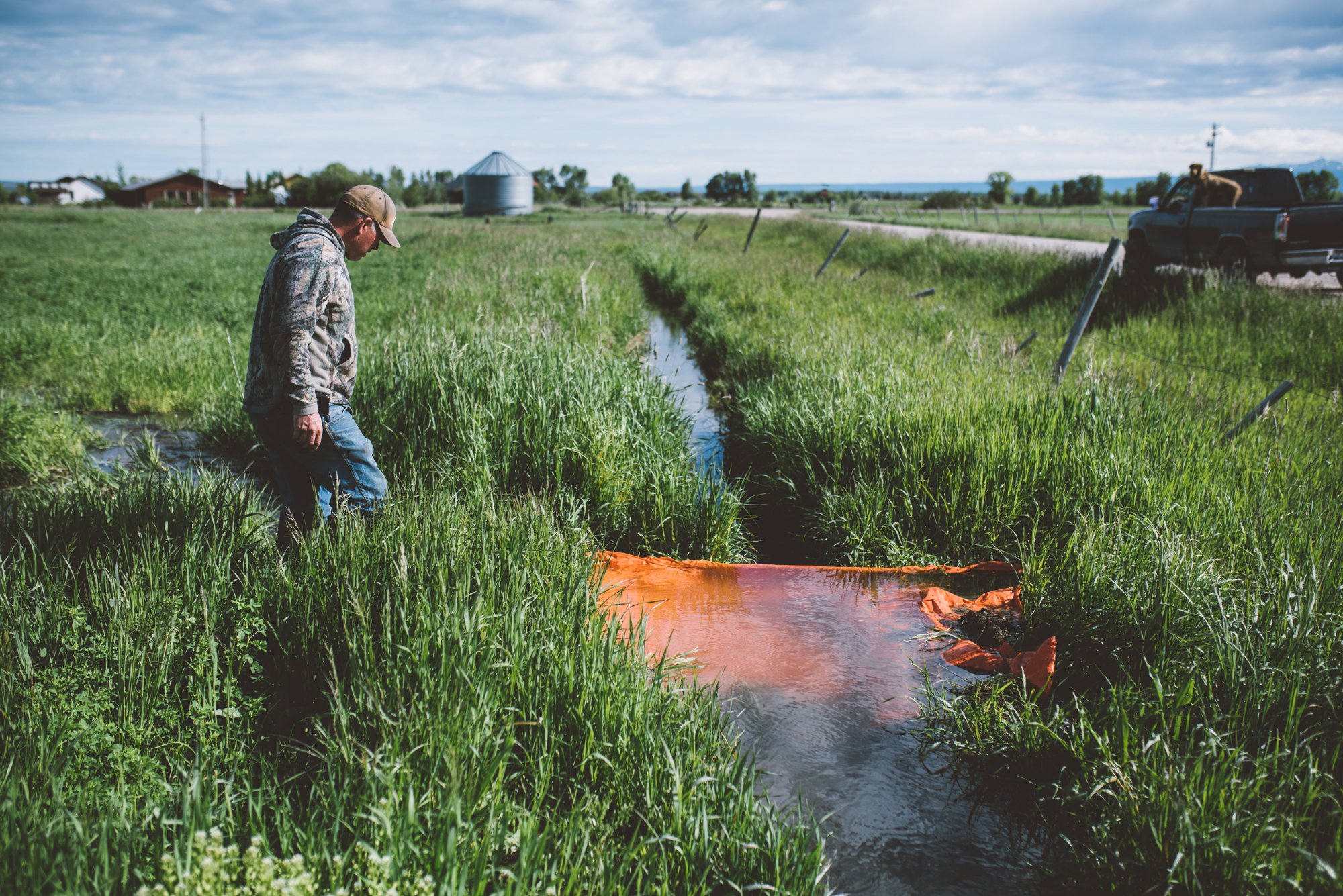
New Purpose for Old Practices
We are a group of agricultural producers, conservation groups, municipal and county leaders, and experts in hydrology and economics of the rural west who are working together to develop a more stable water supply for all users in Teton Valley.
Teton Valley, Idaho
Declines in the underground aquifer and water supply are having a big impact on local livelihoods, fish, and wildlife. In response, an unlikely and effective partnership of local irrigators, agencies, scientists and conservation groups are finding solutions to change the way we work together and how water is managed to sustain the future of agriculture in Teton Valley.
Our goal is to create and implement an integrated water management plan that converts cheap and abundant early-season water into valuable summer water.
Here’s how it works.
Incidental recharge occurs when water sinks into the aquifer as a result of human activities incidental to irrigation, such as when water sinks into the ground when farmers flood irrigate fields or when water is conveyed through unlined irrigation canals. It is a technique that can be used to improve, or recharge, the local aquifer.
We propose a market approach to groundwater recharge.
The market is driven by the premise that water is worth significantly more ecologically and economically in July and August than it is in April and May. Our primary strategy is to replace declining snowpack storage with groundwater storage, thereby delaying the delivery of headwater basin water to downstream users and raising local aquifer levels. The Teton Basin geology results in instream delivery of water 1-3 months after it is recharged into the ground, raising aquifer levels in the interim, and increasing late season water supplies. In essence, the market serves to turn April and May water into functional July and August water.
The demand side of the market is formed by beneficiaries of the more abundant late season water: individual downstream farmers, downstream canal companies and irrigation districts, and local municipalities who face increased pumping costs due to the declining aquifer. The supply side of the market is composed of irrigators in the Teton Basin who hold water rights and have the ability to increase incidental recharge through modified irrigation practices.
Water rights and irrigation practices in the Teton Basin are uniquely suited to this approach. Six years of water monitoring and modeling demonstrate its success. Together, we can create and implement an integrated water management plan that uses these re-purposed practices from our past to preserve and protect our collective future. Join us.
Teton Valley, Idaho
Teton Valley is an agricultural community characterized by iconic open spaces and mountain views. The Teton River basin is a dynamic system fed by snowmelt from the Teton and Big Hole Mountains that surround the Valley. Teton Valley is part of the Greater Yellowstone Ecosystem and is home to lush wetland habitat and a number of ecologically-significant fish. The Teton River runs through the heart of the Valley and drives the local economy by sustaining agriculture and supporting vibrant tourism and recreation industries.
This remarkable work is thanks to partnerships some would consider unthinkable. Agricultural producers and conservationists working closely on a collaborative solution that brings benefits to landowners, conservationists, as well as the community and watershed at large. Special gratitude to all who make this work possible.
Watch this short film to hear from some of the program’s participants and organizers.
Lifeblood: From Farms to Fish
Partners
Trail Creek Sprinkler Irrigation Company, Garden Water Company, Fox Creek Canal Company, Cherry Grove Canal Company, Individual water rights holders, Teton Soil Conservation District, Friends of Teton River, Henry’s Fork Foundation, LegacyWorks Group, Teton Regional Land Trust, Teton County Farm Bureau, NRCS, City of Driggs, City of Victor, and Teton County, Idaho.
Past Funders
NRCS (through RCPP), Bureau of Reclamation (WaterSMART programs), Idaho Department of Water Resources, National Fish and Wildlife Foundation, The Nature Conservancy, Patagonia, and 1% for the Tetons
















